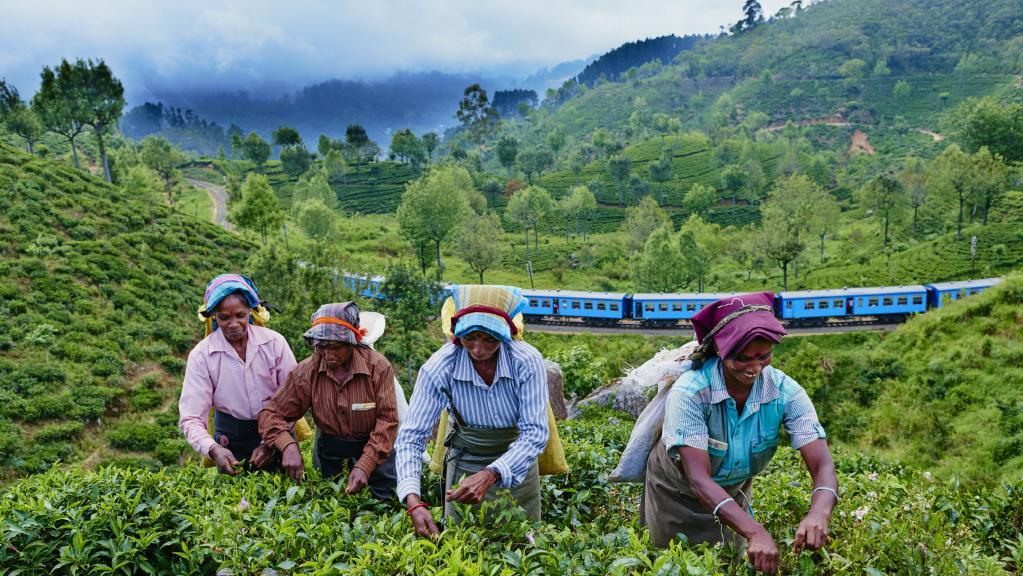Winemakers can learn a lot from the care and attention the average tea farmer takes in producing an average crop of tea leaves. Harry Crowther finds much to admire up and down the tea growing slopes of Sri Lanka.
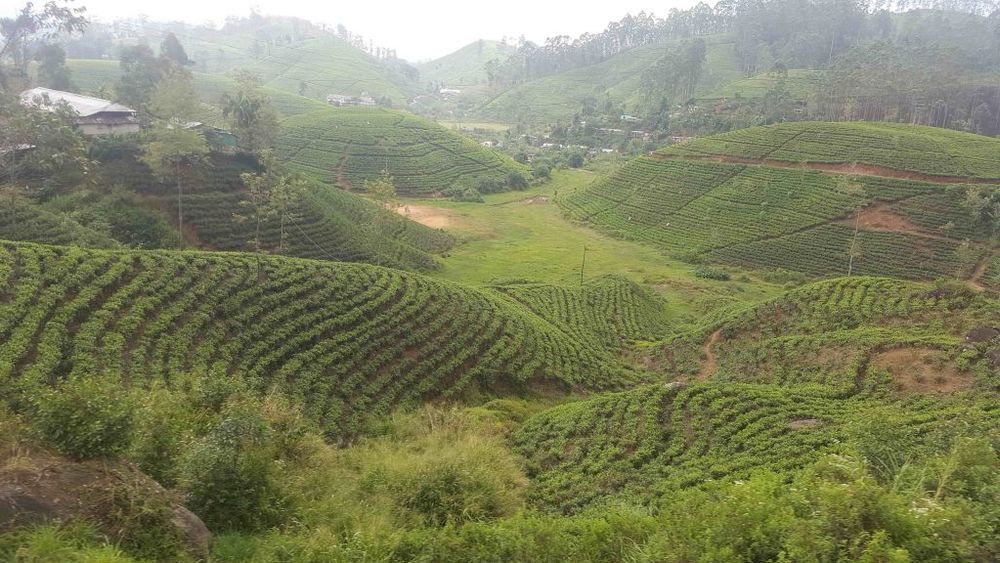
The rolling tea fields…
When I was in the early stages of my wine endeavours, I was a poor student in Leeds. I would stay up until all hours swirling, sipping and spitting Chablis and Pinotage into a bowl in my shared kitchen in Hyde Park (no way near as glam as its London namesake).
To my housemates’ shock-horror, the makeshift spit bowl or bucket was as unnecessary as it was disgusting, “Hey Mo, give this a try”, I encouraged one of the lads one afternoon.
Mo was crashing on our sofa for a while. Seeing as the sofa was in the same room as the kitchen, he had endured the brunt of the gargling and slurping through the night and was particularly fond of my thirst for a distinction in my blind tasting exam.
“Overwhelming aromas of complete rubbish, Harry… Red is red and white’s white.”
My newfound winey obsession compelled to take his opinion far too personally, and so I went out of my way to educate Mo. I wanted to show him an example of two wines that he could at least try to differentiate between. At first, I thought to go for an oaked versus un-oaked white wine comparison. It was an easy one, right off the bat you can tell the difference just from the colour. A Cali Chardonnay against a Kiwi Sauvignon Blanc, for example. I later learnt that Mo wasn’t a fan of white, as a result I opted for the tannin test of two reds instead.
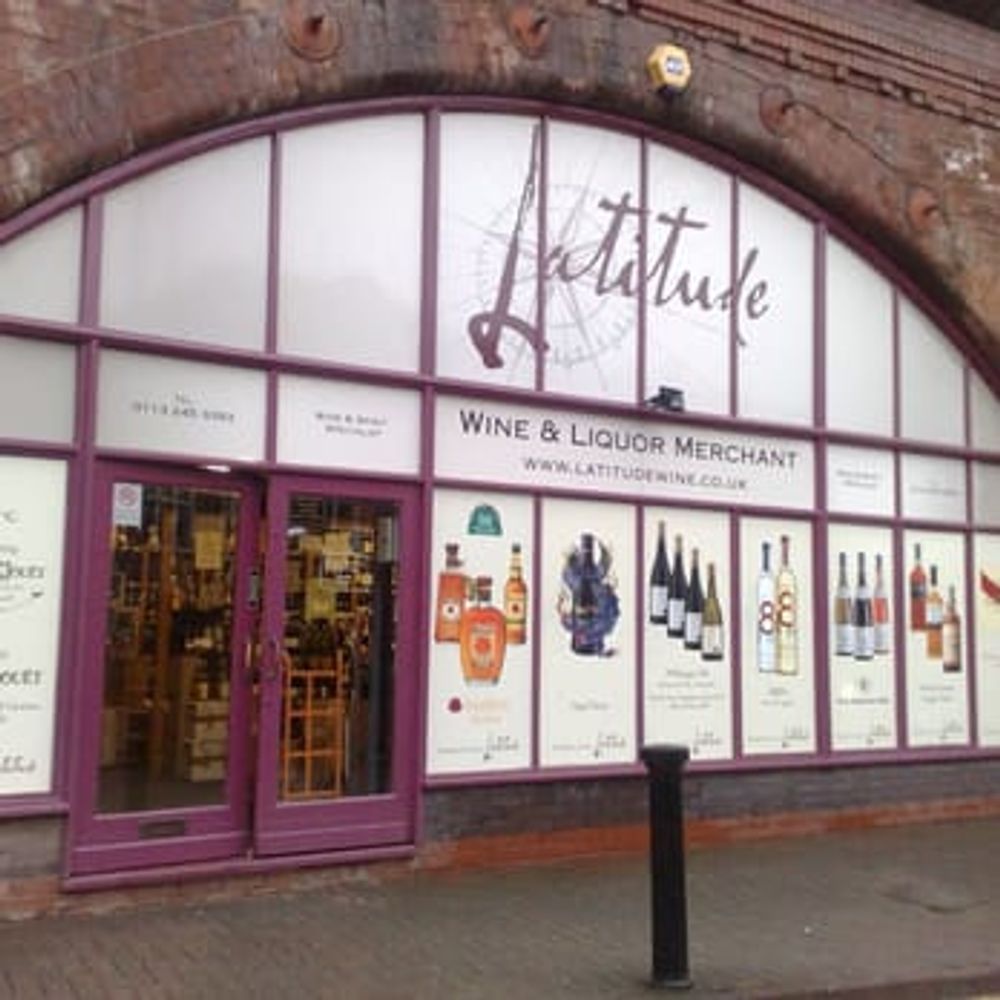
Latitude wine merchants in Leeds was responsible for helping Harry Crowther indulge in his passion for wine…less so his student house mates
The Latitude wine shop, conveniently found at the bottom of Leeds’ booziest strip, Call Lane, was my go to outlet for, “have you got a good example of…?”.
In true, poor student fashion, I lumped the best part of 40 quid of my student loan on a half decent Barolo (follow this link for Wine Folly’s Nebbiolo in a Nutshell master class) and a softer, far less tannic Argentine Bonarda.
Know your tannins
Naturally, I thought these would be two great tipples to coach Mo through his lack of appreciation. We would taste through a few key differences between wines, in particular the tannins.
“So… What are tannins?” Mo questioned as I unplugged the cork of the Bonarda.
Probably a good place to start.
“You know when you have a cup of tea, that chalky texture on the inside of your cheeks, and between your gums and inner lip? That’s tannin. It’s the texture of a wine, or a cup of tea.”
As Mo nodded in acknowledgment of my tea analogy, we moved on to the wine tasting part, comparing and contrasting the tannic merits of both reds, amongst other qualities. Since then, I have always found a cuppa to be a great example of tannic explanation when educating others on wine tasting skills.
To my ignorance, I had no idea that tea and wine actually have a lot more in common than meets the eye.
My recent trip to Sri Lanka and to the inland tea plantations and one factory in particular, unearthed some really interesting parallels between tea and wine production that far exceeds the boundaries of tannins!
Here’s what I learnt on my travels….
1. A Touch of Douro?

We began our trip on the west coast of Sri Lanka, moving south from the capital, Colombo, down to Mirrissa to catch a few blue whales. From there, we travelled north, up through the spine of the country, towards the central highlands and into tea-land.
Nuwara Eliya and Kandy are the two most prolific tea-growing regions in the central province of the country. Luscious, green-rolling hillsides caked in tea plantations. In parts, much of this region reminds me of the Douro Valley. Terraced plantings carved out of the landscape with laser precision marry up with the natural contours of this fertile land.
Interestingly, tea in Sri Lanka is categorised into one of three groups, low, mid or high country, depending on its geographical location. Ring any bells? Three sub-regions of the Douro perhaps? Baixo Corgo, Cima Corgo and the Douro Superior, the Baixo Corgo shares the closest similarities to the tea farms.
Also all tea in Sri Lanka is hand picked and harvested (as opposed to by machine) to ensure ‘best selection’ practice – as they do in the Douro!
2. Vineyard or plantation management
We were able to visit the Pedro Tea Factory where I probed our tour guide to explain how they worked out in the field with the tea bushes (bush seems to be the most accurate name for the plantings, not quite as romantic as vine, admittedly).
Only natural fertilisers are used in the field, similar to organic viticulture perhaps, and some of bushes, like old vines, are over 100 years old.
Tea bushes also require constant nurturing and attention from farmers and are often pruned and trained laterally. This is not unlike the Vertical Shoot Position (VSP) training system adopted by viticulturalists the world over.
Leaves are plucked on a two-leaf-one-bud basis. Hence the importance of hand harvesting; I learnt this practice is now even more necessary because most of the flavour and subtle aromas are held at the top of the cane. Anything below the two-leaf line will dilute the flavour of the final product. In this case, machinery just won’t cut it, excuse the pun.
3.Withering at heights
A tea factory doesn’t have quite the romance of a wine chateau or bodega. As long as you stand with your back to The Pedro Tea Factory and look outwards, the views are breathtaking.
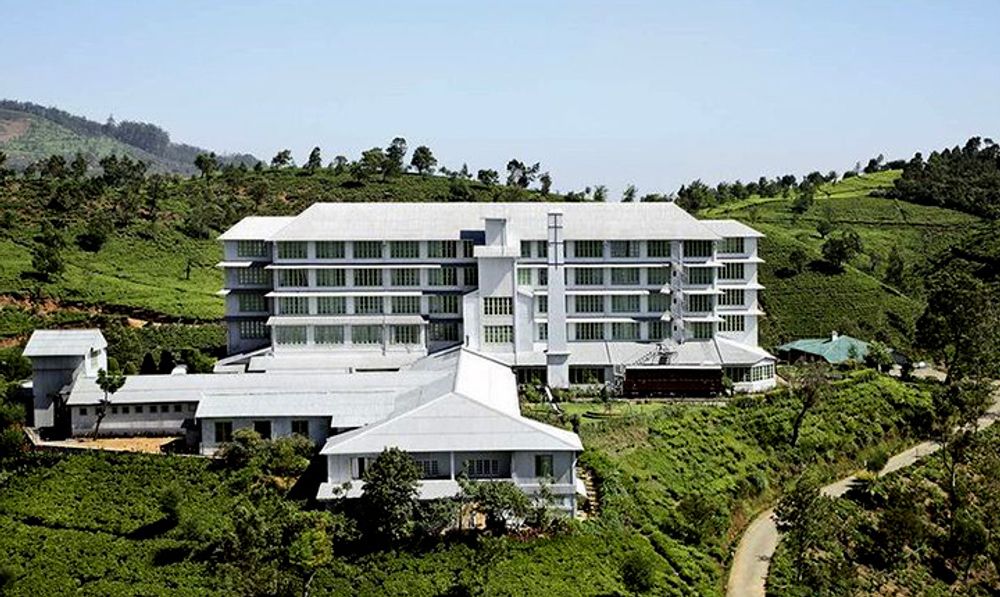
The Pedro Tea factory treats and handles its tea leaves with as much care s a winery does its grapes
Looks aside, the factory is in prime location. The site selection manual for vineyards would ideally be close to the winery, and the factory is set just meters from the bulk of the plantations. The quicker you can get the grapes, or leaves, from picking to processing, the better.
Our uninteresting factory grabs the attention a little more once inside. The staircase spirals around a central column elevator cage shaft that feeds access to each level. At the very top of the building are the withering rooms. There is a short hallway at the top of a stairs, with six large extractor-sized fans that lead to giant troughs about 15meters long, three on each side. Here, leaves are placed and dried for 12-14 hours. This extracts about 45% of the moisture and completes the first step of the tea making process.
In a sense, winemakers do the opposite, but to the same end. A process we know better as the cold soak, or ‘pre-fermentation maceration’.
The cold soak is a period for the grape juice to sit with the berries and skins, extracting flavour and tannin. Whilst the withering process is essentially the reverse of cold soaking, both methods serve to increase flavour and intensity of the final product.
Maybe you’re thinking of the appassimento method, most notably adopted by winemakers in northern Italy is the famous drying process of grapes to increase concentration. This is probably a more relevant comparison to withering. But, in favour of a more holistic winemaking approach, I’ll stick with the withering versus maceration spiel, either way, all three methods serve the same purpose.
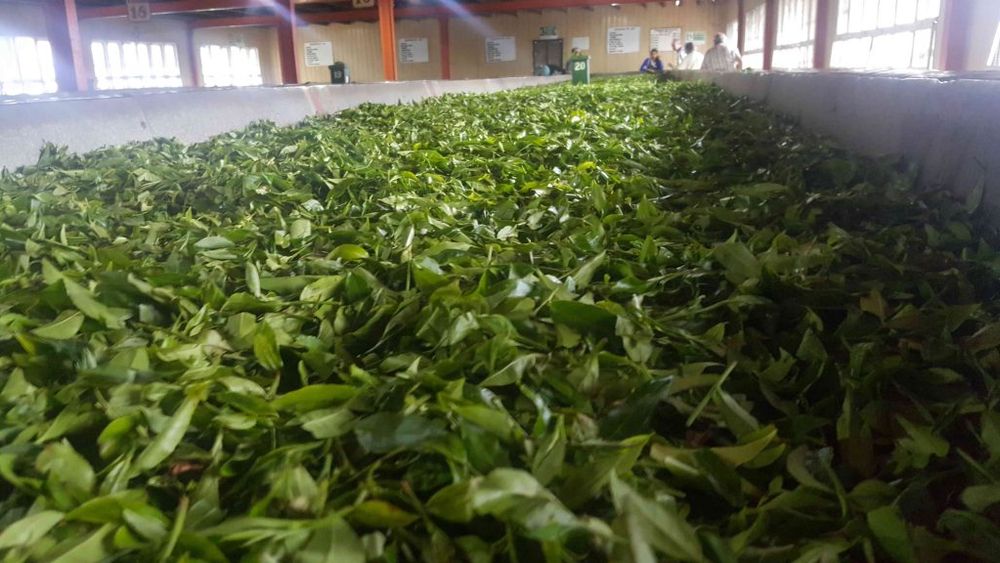
Racking…the tea leaf way. All leaves are carefully hand picked
4. Pump and Roll
Unless it’s a half an inch think-skinned batch of Tannat or Petit Sirah, most will punch down or pump-over for ferments for greater, phenolic extraction. Pump-over is a popular technique and it does what it says on the tin. It sucks juice from the bottom of the tank and throws it back onto the floating skins at the top.
In tea production the withered tea leaves are taken from their troughs and transported downstairs via that rickety elevator ready for their version of remontage. The rolling process sees leaves put into a steel roller that pulls them apart and extracts the key enzymes and caffeine necessary for a natural, spontaneous fermentation.
But this is not like the fermentation one expects from grapes. Instead it refers to the level of oxidation tea leaves are exposed to.
5. To kill a ferment
The Pedro Estate boasts some 2,000 acres of plantation. According to our tour guide, approximately two tonnes can be harvested on a given day. Acute attention is paid to the natural fermentation after rolling.
With tea harvesting delivering around a 25% yield, this job becomes even more important. In wine terms, killing a ferment can be as easy as a splash of sulphur dioxide, destroying any residual yeasts lurking around, waiting to turn your wine into nail vanish.
After sufficient oxidation (fermentation), the leaves will start to brown. Now comes the key part. They are placed onto a drying rack. These machines look like gigantic versions of the conveyor belt toasters you find at a hotel breakfast buffet; the ones that you can adjust the speed and temperature so you get just the right amount of toast to your bread. Same concept really. Leaves are dried on this machine for around 21 minutes between 88˚c to 93˚c in order to kill the fermentation and stop oxidation. Immense care has to be taken during this process, over cooking the leaves will result in complete loss of flavour.
I should probably re-address the splash of sulphur remark. Killing a ferment with SO2 is a little more technical than I coined above. Great care must be taken as to the quantity; nobody wants a wine that smells like burnt coal or match that’s just been blown out.
6. Sorting it all out
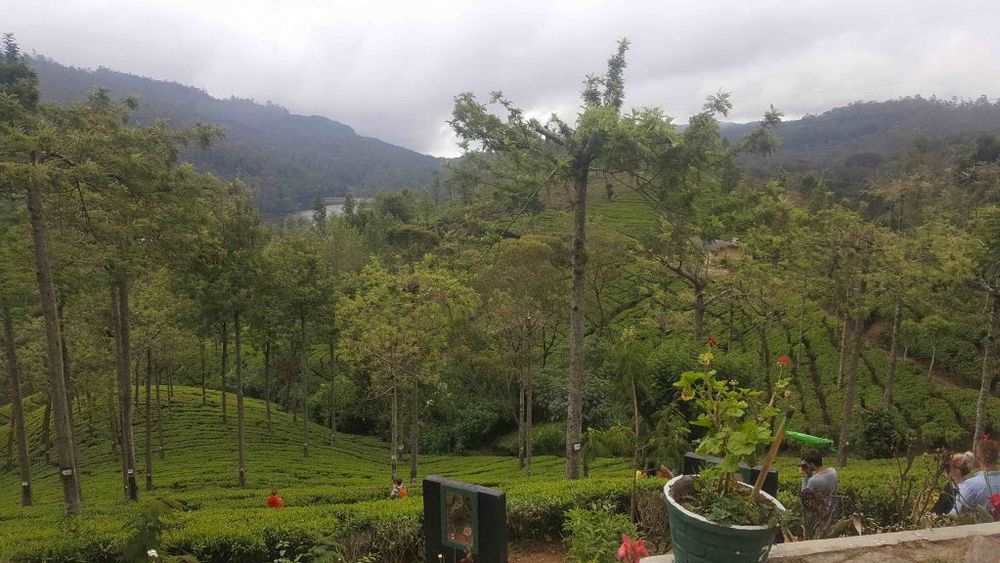
Like anything, tea is produced to more than one quality and grade. Wines have their ‘Grand Cru’ or ‘Reserva’ status, and tea leaves also follow suit. Usually, the more delicate and mild the taste is, the finer the quality.
The rolling process isn’t an exact science; these are old machines. When it pulls apart and mills the leaves, it doesn’t leave them all the same size.
The next step, after the giant toaster, is the tea trades’ version of the sorting table. I appreciate the sorting table is a process at the other end of the winemaking cycle- just after harvesting- so let’s look for another similarity.
Grading is sorted by size. This is achieved by filtering the dry, crushed leaves through a series of, filters. Imagine three or four bowls stacked on top each other, each with different sized holes in them. The bowl at the top is a colander; the holes in each bowl get smaller until the one at the bottom- which is like a sieve-, catches the smallest, dustiest particles. These dusty particles are the strongest in both caffeine, astringency and flavour and don’t really make it out of Sri Lanka. For context, classic English breakfast tea sits about one grade above the dust.
This sorting process set more alarm bells ringing in my head. After all, smaller berried varietals, such as Portugal’s Tinto Cao, for example, have bigger skin to pulp ratios, also making them strong, often tannic and powerful.
The mesh system of sorting and filtering out the larger tea leaves from the small, sounds a bit like the filtration process that a lot of wines go through before bottling. Many argue the pros and cons of filtration, but one thing tends to be agreed upon, the less filtration, the better. A larger membrane in a cross-flow filtration system will strip far less from a wine than one that is less permeable. Bigger holes and bigger tealeaves, equals better quality.
7. A Blend of Consistency
The Pedro Tea Factory is only allowed to sell 5% of their production on-site – their cellar door, so to speak. The rest is sent to local auction, and will eventually contribute to the export market. Although it is not the largest in production, Sri Lanka remains the largest exporter of tea in the world.
Large tea blending companies such as Black Tea Exports and Venture Tea, bid for sacks of tea before blending to make a house style, and then re-packaging for commercial sale. Sound familiar?
There is a good spread of corporate, privately owned and smallholder tea plantations across Sri Lanka. Some of these will naturally share a similary business model comparable to a grower in Champagne. However, the notion of larger companies buying a product to ensure longevity and consistency of a given brand stands out to me as perhaps the biggest, and most striking similarity between the (sparkling) wine and tea worlds.
And another thing…

The age of some of the workers in the tea fields has been questioned
To have an inherent passion for wine; a piece of nature manipulated by man to our own ends, did help my appreciation and understanding of tea production. I am showing my age here (and ignorance), but I had always thought Ceylon Tea was a brand, not the jewel in Sri Lanka’s export crown.
Sadly, when one delves into any subject matter, there is always a risk that you will uncover one or two nasty truths.
Women as young as the age of 12 years old make up well over half of the workforce in the tea industry. They are rock bottom of the social ladder; they are paid less (under 50p a day), work longer and harder hours than the men and often live in windowless dorms of up to a dozen per room, it’s more or less poverty.
My astonishment to such gender inequality in Sri Lanka was further confounded recently; I was recently listening to one of my favourite podcasts, ‘It’s The Drink Talking’ (credit the Thinking Drinkers, Ben McFarland and Tom Sandham with Sam Caporn MW). Their regular, and often amusing ‘spit or swallow’ section of the show covers two boozy topics of interest, one positive, and the other a negative.
This particular ‘spit’, reported that an old law preventing the sale of alcohol to women in Sri Lanka had just been retracted. However the president then went back on the word of his government under pressure from the Buddhist clergy, reintroducing the old law.
I brought this matter up with a hotel manager in Kandy, who informed me there is an election just around the corner… Go figure.
I doubt these words will have any effect on the state of labour injustice in the tea trade in the old Ceylon, but I do hope they raise a little more awareness. My winey, vinous travels have taken me all over the world, and in my experience, I am happy to say that this in one fact that the wine trade does not share with the tea plantations of Sri Lanka.
As Business Today reports, factory space in Sri Lanka has reduced significantly in recent times. According to Dr W Jinadasa, MD of the privately owned Andaradeniya Estate, there is a much-needed movement for replanting up to ‘95%’ of the area under leaf. However many cannot cope with the costs of replanting, which in turn will see an increase in labour costs also. Sadly it seems that until smallholders get more financial support from the authorities, productivity will continue to fall.
- You can read more from Harry Crowther on his blog, Grape Times…
